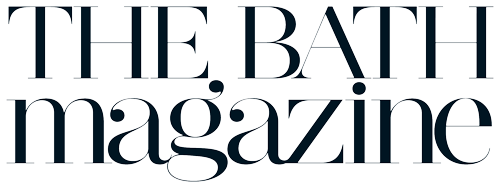Stephen Spicer is a creative professional with a background in fine art, graphic design and illustration whose career has seen the dramatic shift from hand-typesetting to digital production. Most recently he completed his first BA at Bath Spa University.
Where did you spend your early life and what was your education like?
I was born in the World’s End area of Chelsea. At that time the area was bombed-out slums, so my parents moved to South East London to give us a greener environment. School was a nightmare on the whole. I discovered much later in life I had dyspraxia/dyslexia plus other educational needs that weren’t recognised then. I was good at reading and drawing, but that was about it. Grammar school was worse – I was bullied and even plotted with friends to blow it up (or at least let off a lot of fireworks!)
When did the creative spark strike?
I discovered my passion for print while I was still at school. I created newspapers for friends and got involved in the ‘Underground Press’ movement as a teenager, running a pirate print shop. We were shut down for publishing a gay magazine, which was considered obscene in the 1960s. Armed with printed material I was accepted into Chelsea School of Art to do Printed Surface Design at the age of 17, which was right on the King’s Road, one of the centres of groovy London. It was a fun, eye-opening time, and I learned a lot.
How did your career develop?
After Chelsea in 1975 I struggled to find work, but ended up at Boots, managing the photo department. Later I moved to Dixons and worked as an internal graphic designer in the head office. I came across a a prototype of the Apple Macintosh in 1983 and I took this and the Imagewriter printer that came with it. With those tools I could produce text and images on screen and print them out. That revolutionised my job, and there was no need to constantly retype things on an IBM golfball typewriter.
When the first Laserprinter appeared, I proposed the idea to Dixons’ owner, Stanley Kalms, of using that for typesetting, avoiding the huge charges we paid for outside typesetters. He gave me the go-ahead to get one. The cost then was about the same as my annual salary, but Dixons recovered that cost in under six months, if I remember rightly.



A series of interactive Mechanisms made for Stephen’s degree show. They are based on arcade fortune-telling machines, but with an environmental message and hidden animations. They will be on display at the Pound Arts Centre in Corsham in May.
What brought you to Bath?
Word spread and a newspaper did an article on Dixons and how computer-based design with Laserprinters was ‘the future of print’. By that time Dixons had the biggest network of Macs in the country. Chris Anderson saw it and invited me to come down to Bath and help automate the magazine production for a publishing company he wanted to start up. We came up with the name ‘Future Publishing’ over coffee.
I moved to Bath, which was very different from what I was used to in London’s West End – I had the impression that people went to bed with Ovaltine at 9.30pm! We slowly automated Future, installed typesetters, introduced scanners and other digital production equipment. This was all leading technology at the time.
What did you do after your time at Future?
Apple offered me a job travelling around the South West helping publishers to switch to digital page-making. I think I helped the majority of publishers in the South West consider digital – although the Bath Chronicle was a notable abstainer!
After a time I wanted to get my hands dirty again, so went freelance as a graphic designer and trainer. In those days, if you produced digital output then you needed to get it typeset, or more accurately image-set as you could output pictures as well as letters. The machines, however, were very expensive. Apple had an Imagesetter as a demo machine, which retailed for approx £40,000 – I offered them £15,000, which was accepted. The bank manager agreed to the loan quickly, saying, “I lent you the money because you turned up in working clothes; had you turned up in a suit I wouldn’t have.”
The business prospered, with clients both local and national.
What other Bath work connections have you had?
I later became a teacher at Bath College, teaching media, publishing, art, and business studies for 12 years. Teaching had never been my plan, but as a freelancer you tend never to say no, so I had a go. I loved the students, and I found it rewarding. I am still in loose contact with a good few and it’s great fun to see how their lives have worked out.
Then at the age of 65 I decided to do a BA in illustration at Bath Spa University. Being a (very) mature student worked out roughly how I expected it to. As an older man I was largely politely ignored by the regular students. Having said that I made some wonderful friends there and met some stunning artists who I’m sure will make their mark in the years to come.
I researched and used humour for my final project, where I created a comic book, for which I got a very good mark. For my degree show I built some machines similar to arcade games. They have either environmental angles or anatomical ones. They will be on show at the Pound Arts in Corsham later this year.

Why have you stayed in Bath?
I’ve stayed in Bath because of other people. My wife is Bath (almost) born and bred and my children all grew up here. Me? I’m still a Londoner – I miss the buzz of the West End, but I acknowledge that it’s not the same place I left. I doubt if I shall ever move, but I wouldn’t count it out.
How has Bath changed in the time you’ve been here?
It feels like it has sprawled and continued to gentrify. Or maybe I’ve been noticing it more. Almost all the useful shops are gone, Francis DIY in Moorland Road being a notable exception. Parking is a nightmare and expensive. But it’s not all bad – 44AD Gallery does a great job, the hospitals look after us and the Museum of Bath at Work proves it’s not all Austen!
What are some of your favourite haunts in the city?
My haunts are usually coffee shops. My wife and I have a running joke on Facebook where I photograph her drinking coffee in various establishments. Current favourites are Colonna & Small’s for their excellent expresso and Colombian Coffee Company for Bombon, their signature drink. I love the botanical gardens and BRLSI too.
What sort of work do you do now?
I produce the Bath Fringe Festival guide and design Automata Magazine, an international online magazine. I’m currently working on illustrations and graphics for two exhibitions in May, including one at Pound Arts Corsham. I have done covers for Komedia’s programmes, which like most of my work contain a self-portrait hidden somewhere!
Tell us about your creative work.
My work has two or three main strands. There are illustration/ cartooning; making machines and objects; and graphic design. I’m wary of the cartoon label as it’s more humourous illustration and it nearly always tells a story or is in someway instructional. My comic Toes examined what happened when I got diabetic neuropathy in my foot.
Illustration is usually started with pen and ink. I like drawing and I like having a product I can put with other work – something that’s purely digital doesn’t do. Also, I use ink and watercolour and slosh those all over the paper. Often paper is secondhand or has been stained. My mantra is “Never start with a clean sheet of paper”, which means, build on previous work, and also more literally.
Despite my history of working with technology, for illustration my style is conservative – but for graphics and building machines I am current. I’m enrolled in Adobe’s Beta program and am looking at modern equipment for machine building. I use AI for sorting some images (normally restoring photos supplied for magazine work) and I am not afraid of it. I have seen enormous technological change in my working life, moving from lead type to what we do currently. I continue to learn and use these tools and I am lucky that in my world science and art synthesise.
What gets you up in the morning?
Two things: sunlight and several cups of coffee. Actually three, because the cat wants feeding. Bright sunshine is key.
Looking back, what advice would you give to your younger self?
On the whole, be more assertive. Perhaps school would have been easier if I had spoken up more. Things got better after I joined a motorcycle club and put on some weight (I was a very skinny youth), and working with Dixons taught me to stand up and fight my corner, all of which helped. I would advise my younger self to freelance earlier and learn more business skills. But also make full use of the opportunities that art school gave me.
What I do is what I am; it’s not a career, it’s a calling, I suppose. Everything feeds into what I do – work is indivisible from play. Projecting forward is a sobering experience, but it’s not depressing; it gives energy for the next thing to work on. Time may be short!
stephenspicer.co.uk




